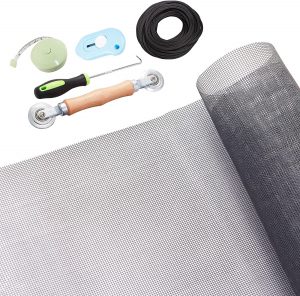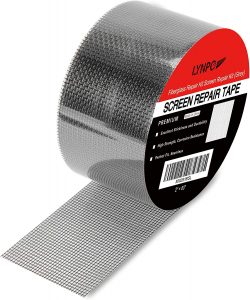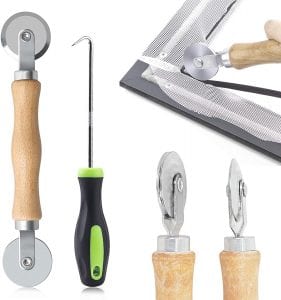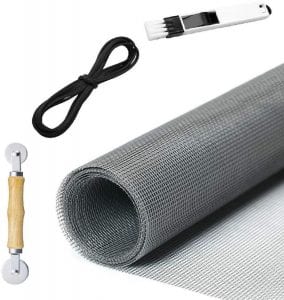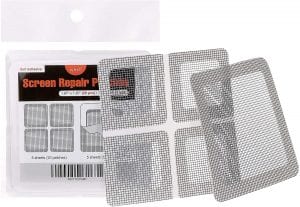The Best Screen Door Repair Kit
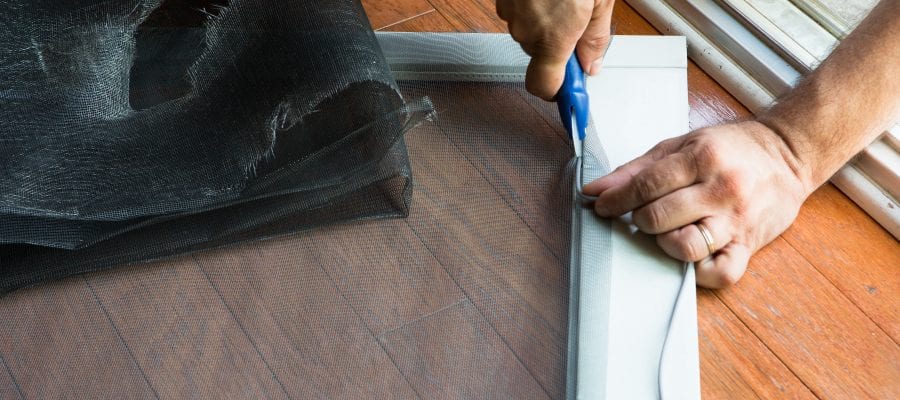
Our Review Process
Don't Waste Your Money is focused on helping you make the best purchasing decision. Our team of experts spends hundreds of hours analyzing, testing, and researching products so you don't have to. Learn more.
Our Picks For The Top Screen Door Repair Kits
- 1. TOOLTRIZ Easy Install UV Protection Screen Door Repair Kit
- 2. LYNPO Anti-Mosquito Long-Lasting Screen Door Repair Kit
- 3. Prime-Line Make-2-Fit Easy Install Screen Door Repair Kit
- 4. King & Charles Ergonomic Handle Screen Door Repair Kit
- 5. Pazaka DIY Flame Retardants Door & Window Screen Repair Kit
- 6. Sayopin Fresh Air Dust Proof Screen Door Repair Kit
- 7. by.RHO Tool-Free Door & Window Screen Repair Patch Kit
With this screen door repair kit, you'll get a host of extras in addition to the 48-inch by 118-inch roll of screen. The kit includes a tape measure, rolling screen tool, knife, screen retainer spline, and spline remover hook. With all of these tools at your disposal, you'll be able to repair your screen in just under 10 minutes.
Everything You NeedThis screen door repair kit is available in either black or gray.
If you're looking for a quick fix, this screen door repair kit is the way to go. It acts just like tape and can be cut to fit the length of the rip in your screen. The tape has a strong bond and is waterproof, so you can use it on both the indoor and outdoor side of the screen.
Economical PickRepairing your screen door doesn't have to cost a fortune, thanks to this budget-friendly repair kit.
In this screen door repair kit, you'll get a 36" x 84" charcoal fiberglass screen cloth, a rolling tool and 30 feet of black vinyl spine measuring .155 inches in diameter. To install, you'll simply insert the cloth and spine into the spline groove of your screen frame, and you'll use the rolling tool to press it into place. Not only is it easy to ...
Charcoal-Colored FiberglassDark-colored fiberglass will provide the protection you need while also enhancing your home's appearance.
Top quality makes this screen door repair kit stand out. The handles are made from solid wood, and the metal wheels are double-carbon steel bearing for heavy-duty use. You'll also get a hook with a comfortable curved handle to help you pull out old bead. The rolling tool has both a convex and concave rolling wheel to make repair easier.
High-Quality Rolling WheelIf you simply need to repair a screen, this high-quality tool set will be all you'll need.
Buying Guide
If you like to open your windows on a nice day, a screen door could be just what you need. You’ll be able to open your door along with your windows to let the fresh air in and the stale air out. But screen doors can also provide a small amount of protection for your front door. The door behind it won’t have quite as much exposure to sun, rain, sleet and snow, helping it last longer before needing to be repainted or updated.
But screen doors do have one major flaw: over time, they can start showing signs of wear. One of the biggest issues you’ll face is a tear. In fact, it’s rare to find an older screen that doesn’t have at least one snag in it.
When your screen door starts to show signs of wear, you have a few options. Your first inclination may be to replace the entire screen door. You can find storm doors at fairly low prices, sure, but a good one could cost you hundreds of dollars. If you want to upgrade to a storm door, which uses glass instead of a screen, this may be the time to do that, but you’ll pay much more for this option. You’ll also lose the ability to open your door and let fresh air in with a storm door.
The easiest, most affordable option for a worn-out screen door is to repair it. You can outsource the work to an expert, sure, but the charge will likely be more than you’d pay to replace the door altogether. Spend a few minutes on YouTube, and you’ll quickly find that replacing a screen door is a fairly easy job, as long as you have the right tools.
You’ll need three things to repair your door: a replacement door, a roller to place gentle pressure on it to make the seal and a pair of scissors to trim the screen. If you want to replace the vinyl spine along the edge of the screen, you’ll need that piece, as well. You can also buy adhesive patches that will cover any hole seamlessly for a quick, easy fix.
What to Look For
- The first decision you’ll need to make is how much of a replacement you’re willing to make. If you just want to patch a hole or two, and your screen is otherwise in good shape, you can find small adhesive patches. You’ll also need to choose between screen types and sizes. Fiberglass will offer durability and attractiveness, effectively keeping out bugs while letting in plenty of air and sunlight.
- You’ll need a rolling tool to press the screen into the spline groove of the frame of the screen. Some come with two wheels—one concave and one convex. This can cut down on your setup work.
- A hook with a curved handle can give you a hand with removing the old screen.
- Check out the measurements of the screen you’re purchasing. Make sure you can easily trim off any excess.
- If you’re repairing a screen that’s still in good shape, you can also buy the rolling tool separately. Combine this with patches for a screen that merely has a rough spot or two.
- Your repair kit should come with instructions. If not, you can easily find step-by-step guides online, particularly on YouTube.
- The quality of the rolling tool can also make a difference, particularly if you plan to repair screens on an ongoing basis. One with a solid wood handle will give you years of use. Also pay attention to the comfort of the handle. One with the right curves can make the work more ergonomic.
- The screen itself isn’t the only thing that can be prone to wear over time. Also check the wheels, if your screen door rolls on a track. If it’s a hinged door, look at the hinges. You can easily replace those with new hinges using only a screwdriver and some screws.
More to Explore
Legend has it that the screen door was invented by Hannah Harger in 1887. As the story goes, Harger was bothered by the flies disturbing her children and obtained a patent for her invention. However, not only is this story in dispute, the concept of using screens to cut down on insects appears to have been around long before that. Screen room separators were used in Indian and Moorish architecture, and early European settlers were said to have used cheesecloth to keep out “musketoes,” the early word for mosquitos. An 1822 issue of American Farmer advertises “wove wire for window screens,” but the first known widespread use of mesh to protect against insects was during the Civil War, when a sieve company produced them in bulk.

